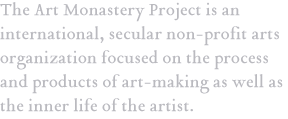Limoncello
Over at her new blog, “La Fermata”, Brittney Williams talks about making limoncello with lemons from the Casale Santa Brigida, our guesthouse in Umbria. If it’s anything like what she made last year, we’ll have a hard time keeping our hands off. She even lets us in on her recipe!
Lemons + a cello = limoncello!!! Well, not really, although their perfume is so zingy it makes me want to burst into spontaneous song. Lemons are in season and it’s time to make limoncello, a traditional Italian lemon liqueur!
- Lemon Tree at the CSB
I walked past the lemon tree at the Casale Santa Brigida and could smell the tangy sweet citrus from a distance. I plucked a heap of lemons from the branches and took them home to make this year’s fresh batch of limoncello.
- A branch laden with lemons
Making this delicious treat is far simpler than it seems, and requires only a few simple ingredients and, most importantly, patience: a patient, steady hand as you gently peel the lemon and take care to make sure none of the white rind remains on the piece you have peeled, and a bit more patience while you wait for the lemon peels to steep in alcohol and release their citrus flavor.
- Lemony sunset
One of the reasons I enjoy learning how to make traditional, labor-intensive foods and treats is that it’s fun to share what I’ve learned and made with friends. In the case of limoncello, this is especially true since I don’t actually even drink alcohol. Traveler hint: the best lemon I have ever tasted in my life was handed to me by a kind stranger as I walked down a cobblestone street in Montemarcello–it tasted like a delicate, tart piece of candy.
Here is my own simple limoncello recipe that I’ve come up with after trying out and modifying a few traditional Italian recipes:
Limoncello
Step 1: Lemon Peels + Alcohol
- 1 liter (1000 ml) “95% pure alcohol” if you can get it (or a bottle of of Everclear alcohol if you can’t)
- 10 medium to large organic, untreated lemons
Wash the lemons in hot water and scrub them with a vegetable brush, making sure to dry each one afterward. Using a sharp paring knife, carefully remove only the yellow part of the rinds from the lemons so that there is no white pith on them. Pour the alcohol into a larger jug (I like to use a 2-liter wine jug with a handle) and add the rind-peelings to the large container. Cover the container and let it sit for thirty days.
After a month has passed, strain the the peels from alcohol and discard the peels. Proceed to Step 2.
Step 2: Simple Syrup
- 3.5 cups water
- 3 cups organic cane sugar (or try 2 cups honey for an interesting taste twist)
In a large pot, make a simple syrup by combining the water and sugar; bring it to a boil and then reduce the heat to medium-low and let it simmer “fast” for 15 minutes and stir frequently. Let the simple syrup cool to room temperature, then add it to the lemon alcohol.
(Note: you may want to add more or less simple syrup depending on how sweet you like your limoncello, I recommend adding 3/4 the simple syrup, tasting the mixture and then adding more as needed)
Step 3: Bottle and Enjoy!
Use a funnel (or a steady hand) and pour the limoncello into bottles. It’s ready to drink immediately and will keep for about a year. I’m a bottle squirrel–I save all kinds of funny bottles, clean them and re-use them so I have plenty of vessels for sharing what I’ve made with others.Makes about 2 liters.
Leave a Reply
You must be logged in to post a comment.




